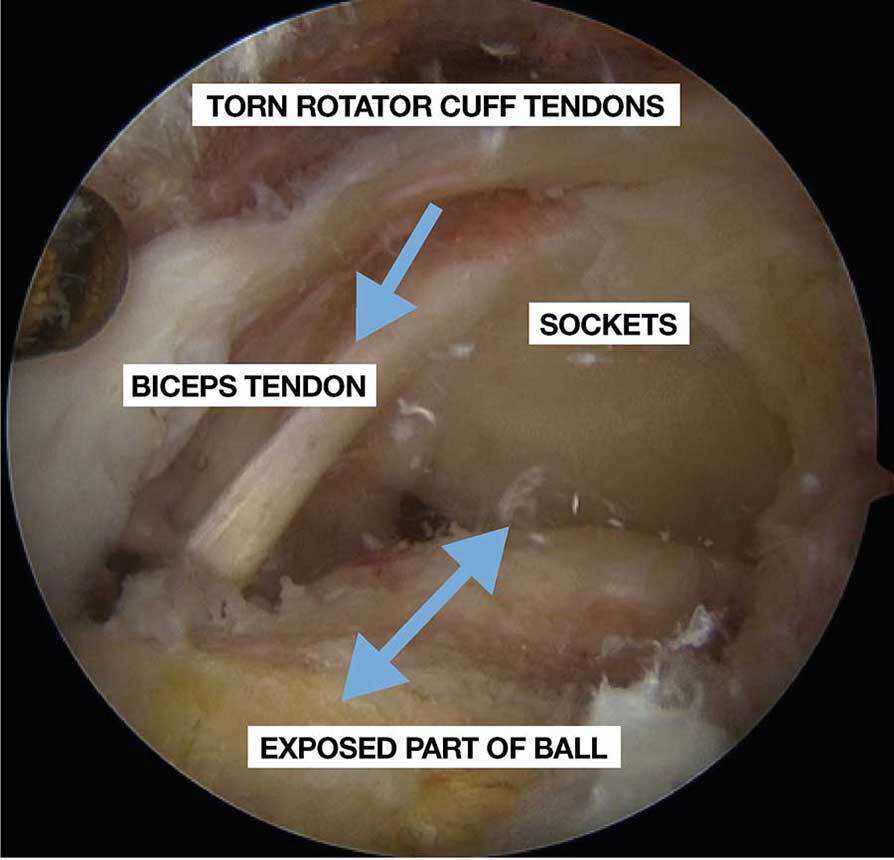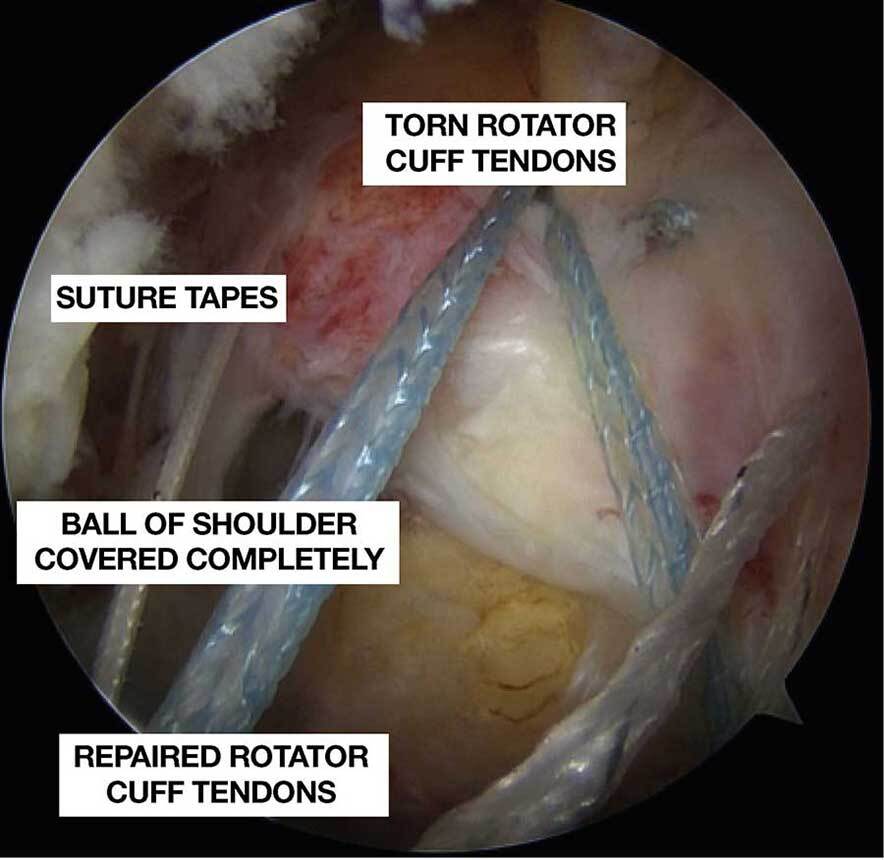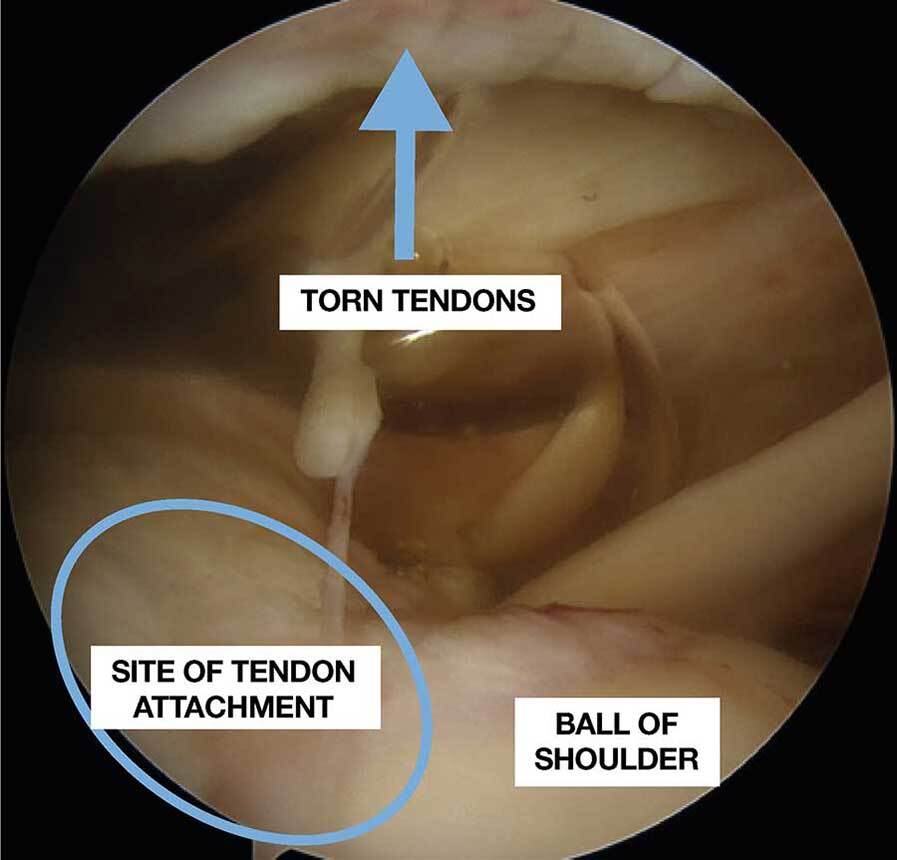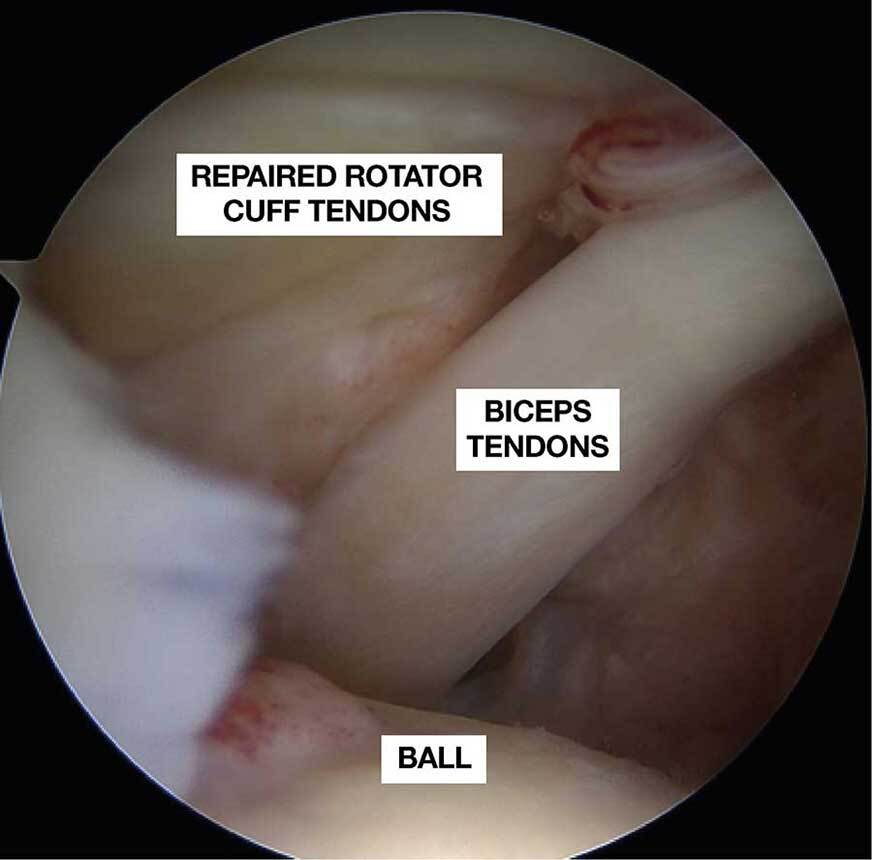ROTATOR CUFF TEAR REPAIR
What is rotator cuff?
Rotator cuff is a group of four muscles-tendons which cover the ball & socket shoulder joint from front
to back.
One muscle-tendon, Subscapularis (which provides 60% power to rotator cuff) is in the front and is a
major stabiliser of the
shoulder joint.
Other three muscle-tendons namely, Supraspinatus (on the top) and Infraspinatus
& Teres Minor (at the back) are also important
stabilisers and provide external rotations so that one could reach the top of the head e.g. in combing
one’s hair!
The top and back tendons are joined with each other to form a sheet like structure and hence the name
cuff.
What is the function of rotator cuff?
- 1) Stability: is the most important function of rotator cuff. All four muscles hug
the big ball of the shoulder and compress it into tiny
socket so that a dynamic fulcrum could be created and the bif muscle all around the shoulder a.k.a
Deltoid could lift the arm above
head in conjunction with muscles of the shoulder blade.
- Rotations: in both positions i.e. with the arm by the side of the body
(adduction) and also with the arm at 90 degrees to the
body i.e. abduction is dependent on intact rotator cuff and hence the name!
Why do the rotator cuff tears occur?
- 1) Genetic factors: There is some evidence of familial predisposition of rotator
cuff disease
- 2) Degenerative factors: Constant over-head activities produce friction between the
rotator cuff and overlying acromial bone of
shoulder blade. This produces fraying of the tendons, in�ammation of the overlying bursa and
eventually tears!
- 3) Trauma: Falling even from standing height where we try to break the fall to
protect ourselves puts a huge demand on rotator cuff
especially in elderly.
- 4) Delay in diagnosis: Most commonly, rotator cuff disease starts in susceptible
individuals at around 40 years of age as
impingement and then progresses to tears. If diagnosed properly at this stage, most people are able
to ward of the problem by
preventive exercises. At times, arthroscopic surgery is needed to
widen the passage of tendons under the impinging
acromial bone.
- 5) Delay in treatment: Once cuff tears develop, they can be successfully dealt with
arthroscopic surgery. However, lack of
awareness and expertise prevails and patients kkep on suffering. With time, tears increase in size
because of zipping phenomenon
and produce disability
What is the incidence/prevalence of cuff tears?
Typically, app. 30% general population at the age of 50 years is having rotator cuff tears and this
increases to 70-80% at 80 years
of age!
Is rotator cuff tear a disease?
Yes, we can call it a disease as it happens in majority without injury!
There are different stages:
- 1) Posterior capsular tightness
- 2) Sub-acromial bursitis and impingement
- 3) Partial tears (Articular sided PASTA / Bursal sided)
- 4) Full thickness tears
- 5) Retracted tears (On an average, tears double in size in 3 years!)
- 6) Chronic retracted Irreparable tears
- 7) Rotator cuff tear Arthropathy (around 10% people with rotator cuff tears develop
arthritis of the shoulder joint)
What is the treatment of rotator cuff disease?
Treatment depends on the stage of the disease:
- 1) Cuff disease without tears: is usually managed without surgery
with NSAIDs. Physiotherapy and cortico-steroid injections.
The success rate of this approach is more than 80%. Fewer people need arthroscopic surgery at this
stage
- 2) Cuff disease with tears: usually and should be treated with
arthroscopic surgery where we reattach the torn tendons back to
the bone to restore the anatomy and hence the function of the shoulder joint
- 3) Irreparable tears with or without arthritis: are treated with Reverse
Shoulder Replacement.
Can we prevent the rotator cuff tears?
Yes, but only in the initial phase when it is confined to rotator cuff disease without
tears! There are certain set of preventive
exercises which help in opening up the passage to avoid friction between the tendon and
bone.
Once the tears happen, they progress steadily over a course of time in pretty much predictable way.
What is the success rate of arthroscopic surgery for rotator
cuff tears?
Again, this depends upon the time a patient presents for treatment. If the patient comes at a stage where
tendon quality is good, not
retracted, involves less than two tendons and there is no arthritis and patient is younger than 65 years
of age, then the outcome is
generally good with retear rate as low as 10%. However, once these criteria are breached alone or in
combination, then failure rates
start to rise. But, even if re-tears happen after surgery, the patients remain painless though the
strength in the affected arm deceases.
What if the tear has become irreparable?
Then there are some options like:
- 1) Superior capsular reconstruction (to prevent ball of the socket from riding up
in the socket)
- 2) Tendon transfers (Taking other tendons around shoulder and rerouting them for
cuff tendons)
- 3) Reverse Shoulder Replacement: is by far the most predictable and successful surgery for
either irreparable tears or tears
with arthritis of shoulder!




